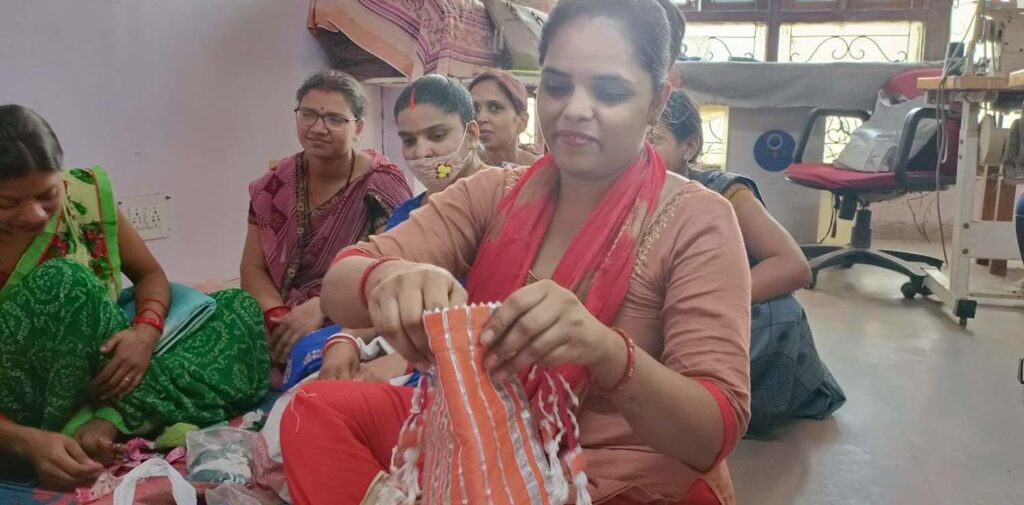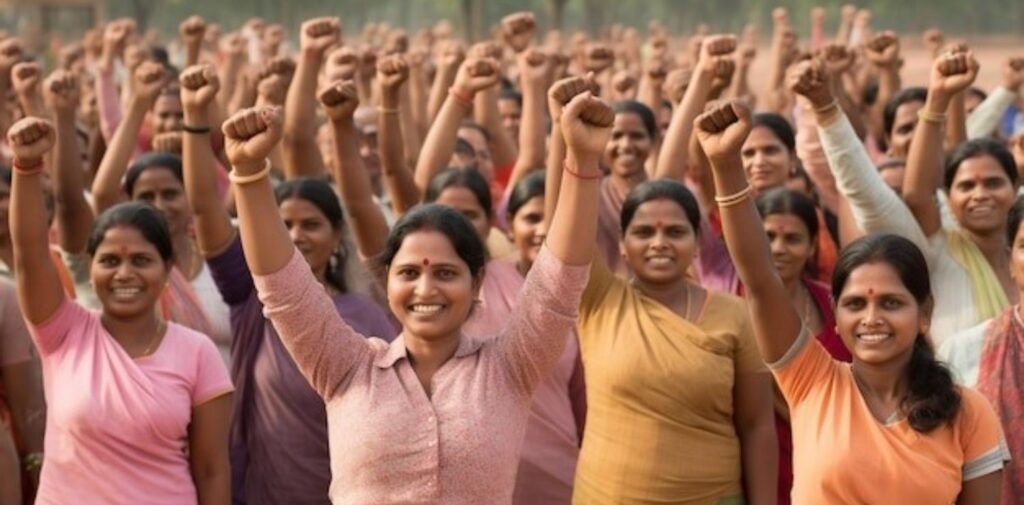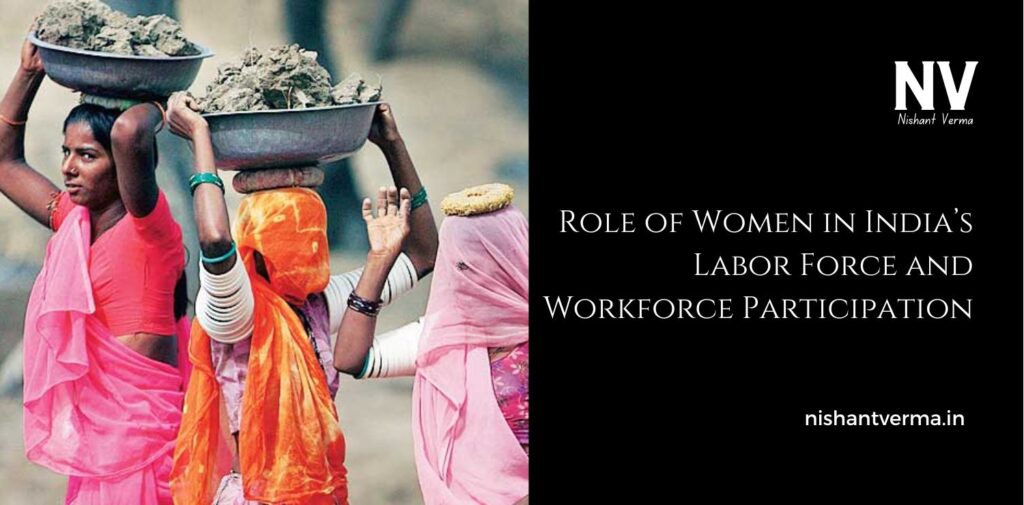India, a country with a rich and diverse history, has always had women who have worked hard to build and shape its society. From early times to the present day, women in India have contributed significantly to the economy, culture, and daily life. However, the role of women in India’s labor force, or the number of women who participate in the workforce, has seen many changes throughout the years. This article will explore how women in India have been part of the labor force, their challenges, and how things are changing.
Women in Early India: Work Beyond the Home
In ancient and medieval India, women played a major role in many aspects of life. While men were usually the breadwinners, women were responsible for household tasks and also helped in agriculture, weaving, pottery, and other trades. Many women, especially in rural areas, worked alongside their families in fields or took part in small businesses like selling goods in markets.
However, most women were not given formal jobs outside their homes. Society believed that a woman’s place was in the home, taking care of the family. This idea restricted women’s freedom to work in public spaces or earn a salary like men.

Women and Work in the Colonial Era
The period when India was under British rule brought both challenges and changes for women. During the colonial era, there was a shift in the way work was organized in the country. The British introduced new industries, like textile mills, coal mining, and railways. Men took jobs in these new sectors, while women continued with their traditional work at home. However, in the cities, more women started working in factories and offices, particularly in textiles, which was one of the major industries in colonial India.
Though some women did find work in these new industries, the opportunities were still limited. Women were paid less than men, and their jobs were often seen as unskilled or temporary. The social norms of the time still looked down upon women working outside the home, and many women faced criticism for doing so.
India’s Independence and Changing Views on Women’s Work
When India became independent in 1947, things slowly began to change for women. The new government started to focus on improving women’s rights and opportunities in all areas of life. New laws were passed that gave women the right to vote, own property, and work in any field they chose. But even with these laws, the number of women in the workforce did not increase much in the early years of independence. Many women were still focused on household work, and society did not always accept women working outside the home.
The Role of Women in India’s Modern Economy
Over the years, India’s economy has grown and changed, and so has the role of women in the workforce. As industries like technology, healthcare, education, and finance have expanded, more women have found work outside their homes. Today, women can be found in almost every industry, from government to private companies, from farming to the corporate world.
More women are now attending schools and universities and are gaining the skills needed for modern jobs. Many women have become doctors, engineers, teachers, and business owners. In urban areas, women are becoming more common in offices, factories, and hospitals.

Challenges Faced by Women in the Workforce
Despite the progress made over the years, women in India still face many challenges when it comes to workforce participation. One of the biggest challenges is gender inequality. Women are still often paid less than men for the same work, and they are underrepresented in higher-level jobs and leadership positions.
In many parts of India, traditional views about gender roles still hold strong. Women are expected to take care of the household and children, which makes it difficult for them to manage work and home responsibilities. This leads to what is called the “double burden,” where women have to work both inside and outside the home, with very little help from others.
Another issue is safety. In many cities and towns, women face the risk of harassment and violence, especially in workplaces and on public transport. This makes it harder for women to pursue careers and feel safe while doing so.
Government Efforts to Improve Women’s Workforce Participation
The Indian government has recognized the importance of women’s participation in the workforce and has introduced several measures to help women. Policies such as the National Policy for Women and schemes like Beti Bachao Beti Padhao (Save the Girl Child, Educate the Girl Child) aim to encourage girls to stay in school and work in the future.
The government has also introduced labor laws that require companies to provide women with equal pay for equal work, maternity leave, and a safe working environment. Some companies have even started offering flexible work hours and the option to work from home to help women balance their work and family responsibilities.
The Role of Women in Rural India
While women in cities are slowly making progress in the workforce, rural women still face many barriers. In rural India, women are often involved in agriculture, where they work in the fields, help with livestock, and manage household chores. However, their work is usually not recognized as “official” work, and they do not earn wages for their efforts.
Many rural women also lack access to education and skills training, which limits their job opportunities. There are ongoing efforts to change this, such as providing better education for girls and offering skills training for rural women. These programs aim to help women start their own businesses, work in local industries, or even join the government workforce.
Women Entrepreneurs: Breaking New Ground
In recent years, many women in India have taken the step of starting their own businesses. Known as women entrepreneurs, these women are creating jobs for themselves and others, and they are making a significant impact on India’s economy. Women-led businesses are becoming more common in sectors like fashion, food, technology, and social services.
The rise of women entrepreneurs is an important change in the Indian labor force because it shows that women can succeed in business and leadership. It also provides opportunities for other women to find work, especially in rural areas.

Looking Ahead: The Future of Women in India’s Workforce
The future of women in India’s labor force looks promising. More women are gaining education, training, and support to join the workforce. As society’s views on women’s roles continue to change, more women will be able to take on leadership roles, run businesses, and contribute to the country’s development.
India still has a long way to go in achieving complete gender equality in the workforce, but with continued effort, women can play an even greater role in shaping the future of the nation. As more women become part of the labor force, they will help build a more prosperous and equal society for everyone.
Conclusion
The role of women in India’s labor force has evolved over time, from early contributions in the home and fields to becoming a significant part of the modern workforce. Women in India face many challenges, such as inequality, limited access to opportunities, and safety concerns, but they are overcoming these obstacles and making important strides toward a better future. With government support, changes in social attitudes, and the rise of women entrepreneurs, the role of women in India’s workforce will continue to grow, helping the nation reach new heights of success and equality.




